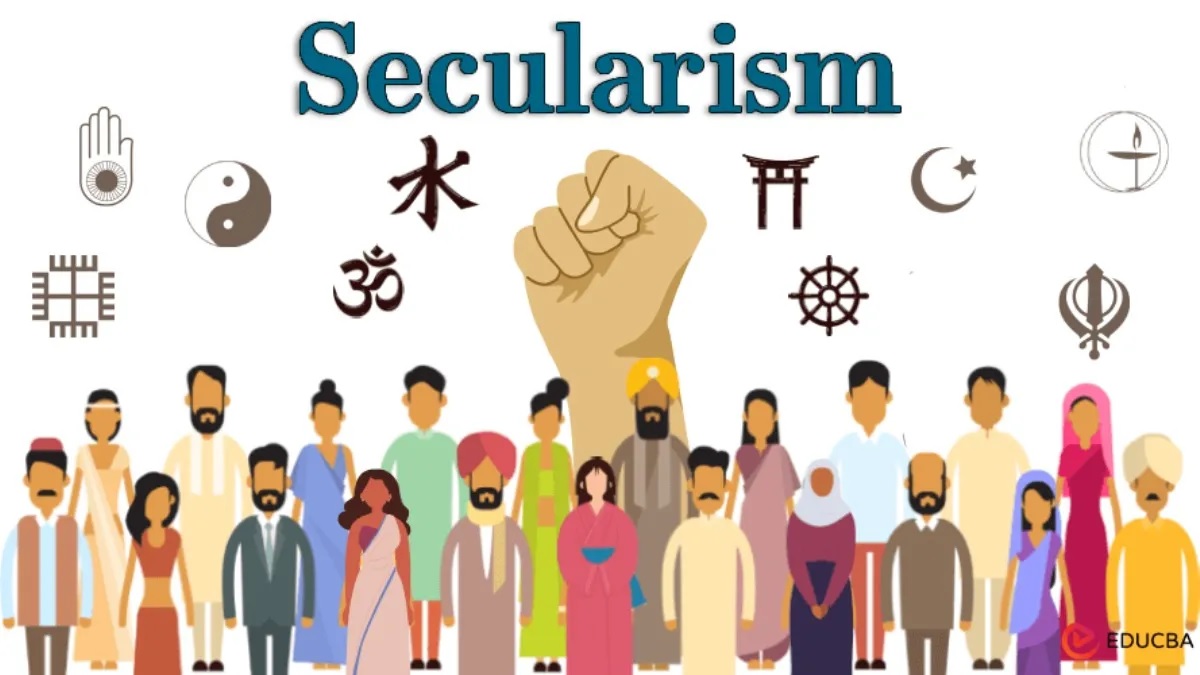India’s Constitution envisions a secular state, though the term ‘secularism’ is not explicitly used. Recent political and social developments have raised concerns about the practical implementation of secular principles. Critically examine the challenges in maintaining India’s secular fabric. Assess the role of judicial oversight in safeguarding secularism.
India’s secular fabric, though foundational to its democratic ethos, faces increasing challenges in the face of political, social, and governance-related developments. The intersection of religion with politics often threatens the state’s neutrality, while judicial oversight remains crucial in upholding the secular nature of the Constitution.
CHALLENGES IN MAINTAINING INDIA’S SECULAR FABRIC:
- Political Exploitation of Religion:Political parties often use religion to consolidate vote banks, blurring the line between religion and state.
Example: The BJP’s Hindutva ideology and use of religious symbols during campaigns undermine secularism by creating a religion-based political identity. - Communal Polarization and Religious Division:The rise of communal tensions, particularly around elections, challenges the secular character of the state.
Example: The Delhi Riots (2020) were exacerbated by political discourse that heightened religious polarization, undermining national unity. - Discriminatory Policies and Legislation:Laws perceived to favor one religion over another raise concerns about the state’s commitment to secularism.
Example: The Citizenship Amendment Act (CAA), which prioritizes non-Muslim refugees, has been criticized as discriminatory, violating the secular spirit of the Constitution. - Influence of Religious Groups on Governance:Religious organizations exert pressure on political decisions, influencing policies in ways that challenge secular principles.
Example: Sabarimala (2018): The Supreme Court’s ruling allowing women of all ages entry into the temple was opposed by religious groups, but the Court upheld secularism by prioritizing constitutional rights. - Conflicts between Religious Personal Laws and Secular Laws:Personal laws based on religious beliefs often conflict with secular laws, challenging uniform governance and equality.
Example: The Triple Talaq Act (2019), criminalizing the practice of instant divorce, reflects judicial efforts to ensure secular values like gender equality over religious customs.
ROLE OF JUDICIAL OVERSIGHT:
- Constitutional Basis for Secularism:Though the term “secular” was added only in the 42nd Amendment (1976), secularism is implied in the Preamble and several Articles of the Constitution. Example: Kesavananda Bharati (1973): The Supreme Court held that secularism is a fundamental aspect of India’s Constitution, making it non-amendable.
- Protecting Religious Freedom and Equality:The judiciary ensures that state actions and laws do not discriminate against or privilege any religion, thereby preserving religious freedom for all citizens. Example: Sabarimala (2018): The Supreme Court struck down a ban on women’s entry into the temple, reaffirming the principle of gender equality and religious freedom under secularism.
- Reviewing Religion-Based Legislation:The courts have been instrumental in reviewing laws that either favor or discriminate against any religion, ensuring they align with secular principles.Example: Citizenship Amendment Act (CAA): The CAA, which provided expedited citizenship to non-Muslim refugees, was criticized for violating the secular principle by discriminating against Muslims. Judicial review continues to play a role in this ongoing debate.
- Ensuring Equal Treatment Under Law:By ensuring that religious communities are treated equally, the judiciary upholds the idea of “equal respect” for all religions in the eyes of the law.
Example: Shah Bano (1985): The Supreme Court ruled that a Muslim woman was entitled to alimony under secular law, despite religious opposition, emphasizing equality for women over personal religious laws. - Balancing Religious Practices and Constitutional Rights:The judiciary balances religious freedom with constitutional rights, often ruling in favor of individual rights over traditional religious practices when necessary. Example: Triple Talaq Act (2019): The Supreme Court declared the practice of instant triple talaq unconstitutional, protecting Muslim women’s rights in the context of religious practices.
- Judicial Intervention in Cases of Communal Violence:The judiciary intervenes in cases where communal violence threatens to disrupt the secular fabric, directing the state to take action against perpetrators and prevent discrimination.
Example: The Gujarat Riots (2002) case saw the judiciary intervene, directing the investigation and prosecution of perpetrators despite political pressure, reinforcing the state’s commitment to secularism. - Preventing Religious Influence in Governance:The judiciary ensures that religion does not influence governance or policy decisions, upholding the principle of a secular state where the government is neutral to all religions. Example: Andhra Pradesh’s “G.O. 55” (2003) allowed the state to intervene in temple management to ensure efficiency, but the courts ruled that such intervention must not undermine religious freedoms.
- Public Interest Litigations (PILs) as Tools for Secularism:PILs have enabled individuals and organizations to challenge practices or policies that violate secularism, with the judiciary playing a key role in rectifying these concerns. Example: PILs challenging the use of religious symbols in government offices or religious discrimination in government schemes have resulted in judicial intervention to preserve secularism.
India’s secularism faces significant challenges from religious-political intersections, and only robust judicial oversight can safeguard the constitutional vision of an inclusive and neutral state.

